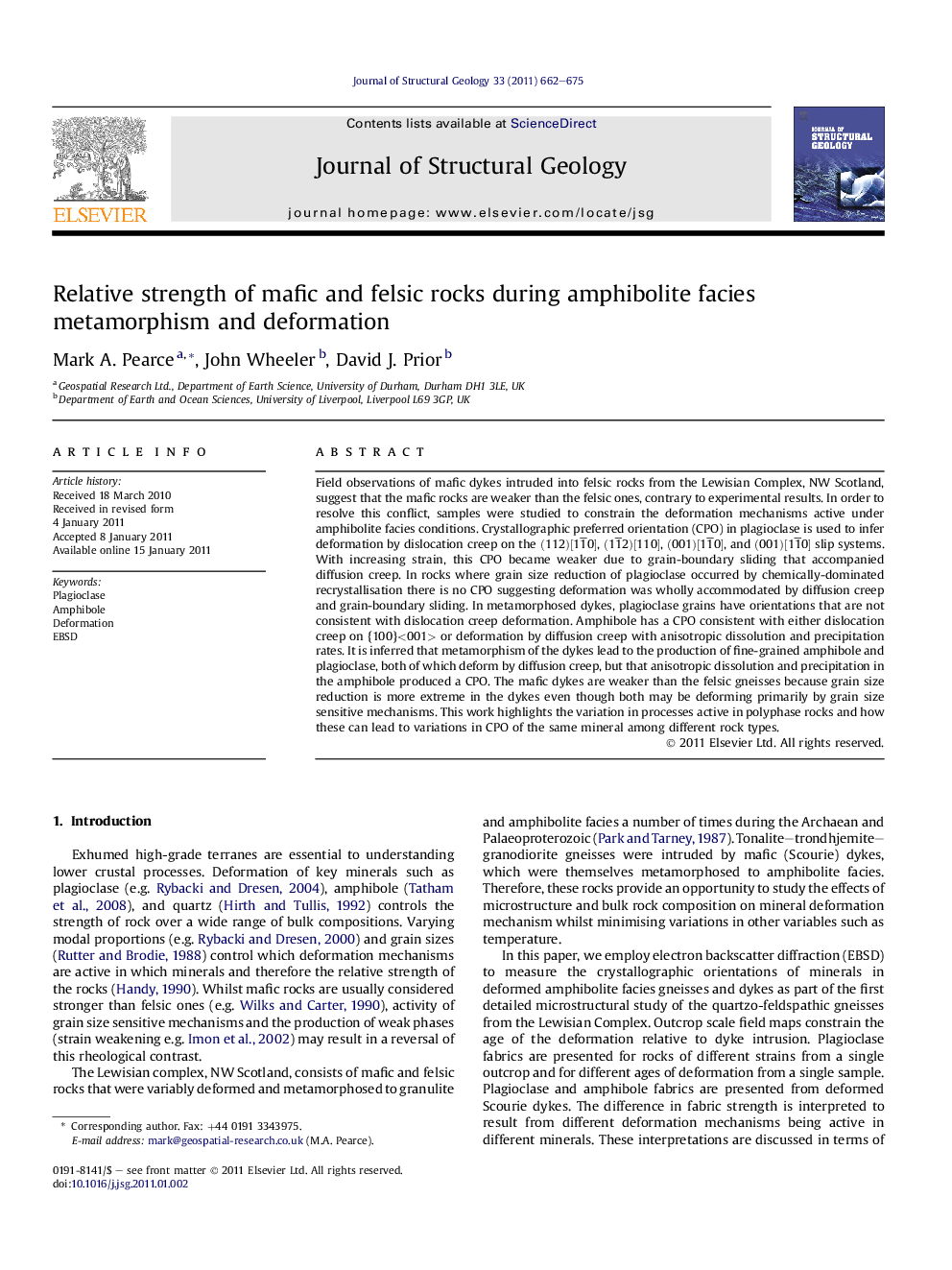| Article ID | Journal | Published Year | Pages | File Type |
|---|---|---|---|---|
| 4733378 | Journal of Structural Geology | 2011 | 14 Pages |
Field observations of mafic dykes intruded into felsic rocks from the Lewisian Complex, NW Scotland, suggest that the mafic rocks are weaker than the felsic ones, contrary to experimental results. In order to resolve this conflict, samples were studied to constrain the deformation mechanisms active under amphibolite facies conditions. Crystallographic preferred orientation (CPO) in plagioclase is used to infer deformation by dislocation creep on the (112)[11¯0], (11¯2)[110], (001)[11¯0], and (001)[11¯0] slip systems. With increasing strain, this CPO became weaker due to grain-boundary sliding that accompanied diffusion creep. In rocks where grain size reduction of plagioclase occurred by chemically-dominated recrystallisation there is no CPO suggesting deformation was wholly accommodated by diffusion creep and grain-boundary sliding. In metamorphosed dykes, plagioclase grains have orientations that are not consistent with dislocation creep deformation. Amphibole has a CPO consistent with either dislocation creep on {100}<001> or deformation by diffusion creep with anisotropic dissolution and precipitation rates. It is inferred that metamorphism of the dykes lead to the production of fine-grained amphibole and plagioclase, both of which deform by diffusion creep, but that anisotropic dissolution and precipitation in the amphibole produced a CPO. The mafic dykes are weaker than the felsic gneisses because grain size reduction is more extreme in the dykes even though both may be deforming primarily by grain size sensitive mechanisms. This work highlights the variation in processes active in polyphase rocks and how these can lead to variations in CPO of the same mineral among different rock types.
► Mafic minerals are considered stronger than felsic ones during dislocation creep. ► Outcrops suggest felsic gneisses are stronger than mafic dykes. ► Metamorphism creates fine-grained rocks. ► Fine-grained rocks deform by diffusion creep. ► Mafic rocks can be weaker than felsic ones depending on history.
